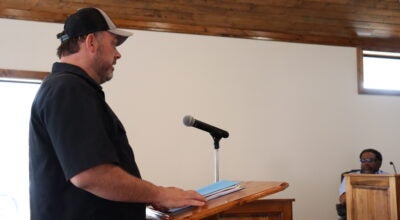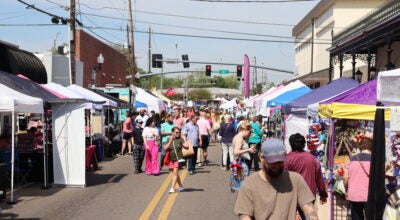Pollinators need your help
Published 9:11 am Friday, April 16, 2021
By Sheri Bethard
Texas Certified Master Gardener, Orange County
Winter Storm Uri took a toll on a lot of our flowering plants, both native and perennials. Pollinators such as bees, butterflies, moths, small animals, birds and even bats need our pollinator plants in order to continue thriving. Even tho most of the wildflowers are starting to bloom, many of our plants have been set back many weeks before getting to the point of forming flowers. While we wait for our native and perennial plants to come back to life, you can help our pollinators by planting “ready made” flowering plants for them, thus helping until the natives and perennials are back to their norm.
Planting already flowering annuals or fast-growing perennials which bloom the first year will provide relief for these creatures. Some good plants to start with are Sweet Alyssum and Calendula. Most of them are now blooming in the stores. Sunflowers are fast growing and bloom early and this is the year of the Sunflower.
Some herbs you can consider planting is Basil and Bee Balm (Monarda) as bees love them. Salvia/Sages are also good plants to use with most of them being perennials. If you want to keep it year after year, check the tag to make sure your selection is a perennial and not an annual Salvia/Sage so you won’t be upset if it does not return the next year. Hummingbirds like their deep throat.
Butterflies and moths like the composite type flowers like those in the Aster Family. Cosmos and Calendula are fast-growing producing flowers early. Some of the plants you can select for your pollinator garden or any garden are:
Aster, Bush Morning Glory, Catnip, Flame Acanthus, Greg’s Blue Mist Flower, Larkspur, Mexican Hat, Zinnias just to add a few to the ones listed above.
If you are interested in being a pollinator friendly yard year-round, here are some tips to get you started. Start out with woody plants such as Red Maple since they are a great bee pollinator in early spring. Vines such as Native Honeysuckle (not the Japanese kind we all are familiar with), Crossvines, Coral Vines and Flame Acanthus are good perennial vines with flowers most of the summer.
Shrubs to consider are Almond Verbena and Glossy Abelia which bloom for about 5-6 months. Roses are also good, but they should be the old-fashioned single rose, not the hybrids which are currently available. Then for mid-summer to fall bloom the butterfly bush is a good option. They come in shades of blue and purple along with pink but the blue and purple are the best for pollinators.
Then there are vegetables which support our pollinators along with pollinating them in order to produce. Peppers and strawberries are well liked by them. Vegetables, such as cabbage and kale, which bolt and flower, do not remove them for a while longer as these are well liked also.
Pollinators also need places to shelter such as small boxes, pieces of wood they can bore into, or cut sections of bamboo just to give examples. When making your garden, leave some bare soil for those needing the soil for making nests in. Water is another thing they need. Placing a water source in your garden will help since all do not get their moisture from the flowers.
For more on pollinators check out https://tpwd.texas.gov/education/bioblitz/guides by the Texas Parks & Wildlife. There you will find many links to refer to on pollinators.



